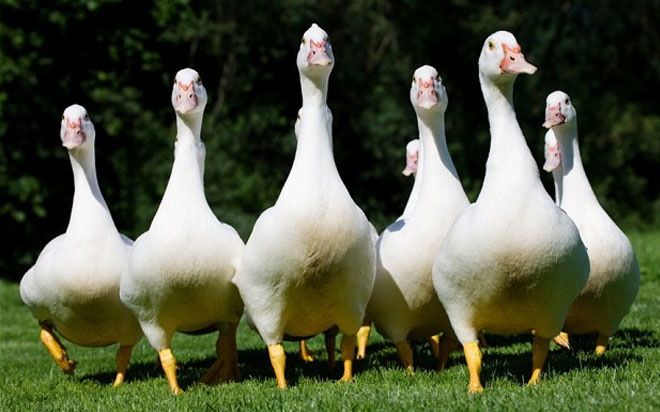
Aug 12, 2015
For anyone in a team, especially those in a Team Leader position, this is an oldie but a goldie! If you already know it, it is Lesson Four that I want to talk about in relation to team leadership, so please skip through and consider my point at the end. If you haven’t read it – enjoy, and then please read my point about Lesson Four below.
Lessons from Geese
(From a speech given by Angeles Arrien at the 1991 Organisational Development Network based on the work of Milton Olson.)
Fact 1
As each goose flap its wings it creates an“uplift” for the birds that follow. By flying in a “V” formation, the whole flock adds 71% greater range than if each bird flew alone.
Lesson: People who share a common sense of direction and community can get where they are going quicker and easier because they are traveling on the thrust of one another.
Fact 2
When a goose falls out of formation, it suddenly feels the drag and resistance of flying alone. It quickly moves back into formation to take advantage of the lifting power of the bird immediately in front of it.
Lesson: If we have as much sense as a goose we stay in formation with those headed where we want to go. We are willing to accept their help and give our help to others.
Fact 3
When the lead goose tires, it rotates back into the formation and another goose flies to the point position.
Lesson: It pays to take turns doing the hard tasks and sharing leadership, as with geese, people are interdependent on each other’s skill, capabilities and unique arrangement of gifts, talents or resources.
Fact 4
The geese flying in formation honk to encourage those up front to keep up their speed.
Lesson: We need to make sure our honking is encouraging. In groups where there is encouragement, the productivity is much greater. The power of encouragement (to stand by one’s heart or core values and encourage the heart and core of others) is the quality of honking we seek.
Fact 5
When a goose gets sick, wounded or shot down, two geese drop out of formation and follow it down to help and protect it. They stay until it dies or can fly again. Then they launch out with another formation or catch up with the flock.
Lesson: If we have as much sense as geese, we will stand by each other in difficult times as well as when we are strong.
If you are a team leader trying to get ‘lift’ from your team, how do you honk?
The honk of a goose can sound quite harsh but, according to Lesson Four, for a goose, it is encouraging. In workplace teams, there needs to be encouragement from team members to each other in order for teams to bond well and for individuals to pitch in to their fullest capacity. The most important encouraging honk, however, needs to be from the team leader. But this is where some people leaders come unstuck; if it is all encouragement, what about the negative conversations we need to have when team members perform or behave below expectation? How can that be encouraging?
Over the 19 years that I have trained in the corporate sector, I have found that feedback is one of the most poorly executed skills by Australian people leaders. Some honk too harshly, de-motivating their team-members. Some honk half-heartedly or not at all, so their team-members do not know where they stand and can start to coast. Some only give a praising or encouraging honk if a team member is going above or beyond; some don’t give praise at all.
Feedback, whether positive or negative, needs to be constructive and the most constructive feedback is feedback that encourages, just like geese.
For negative feedback to be constructive, it needs to be given in a way that will minimise defensiveness and resentment from the recipient, have them accept the reality of the situation and encourage them to move to the desired outcome.
For positive feedback to be constructive – more than just a fleeting ‘feel-good’, “Well done, buddy” – it needs to be placed in a business context to show how whatever specific that has been done is good for the bigger picture.
Are you honking at your team in the most effective way?
How do your Excel skills stack up?
Test NowNext up:
- Remote Events in SharePoint 2013
- Excel – Weighted Average Calculation
- Exchange Online Protection and Evolution
- Create a Custom Tracking View in Project 2013
- 5-steps to conducting quality feedback sessions
- Automate a table of contents in InDesign
- Implementing and administering AD RMS
- Multiple Desktops in Windows 10
- Easily sample and transfer colours between objects in InDesign
- Guidelines for Effective Time Management
Previously
- Spellcheck and custom dictionaries in Microsoft Word
- The grid system of Bootstrap
- Dude, Where’s My Ruler?
- “Hey, Cortana”
- When it’s not harassment
- The Many Flavours of Windows 10
- Easily Create Complex Illustrations with Basic Tools and Pathfinder Commands in Adobe Illustrator
- Excel – Fill in the Blanks
- Introducing Windows 10!
- Good news…about delivering bad news!













